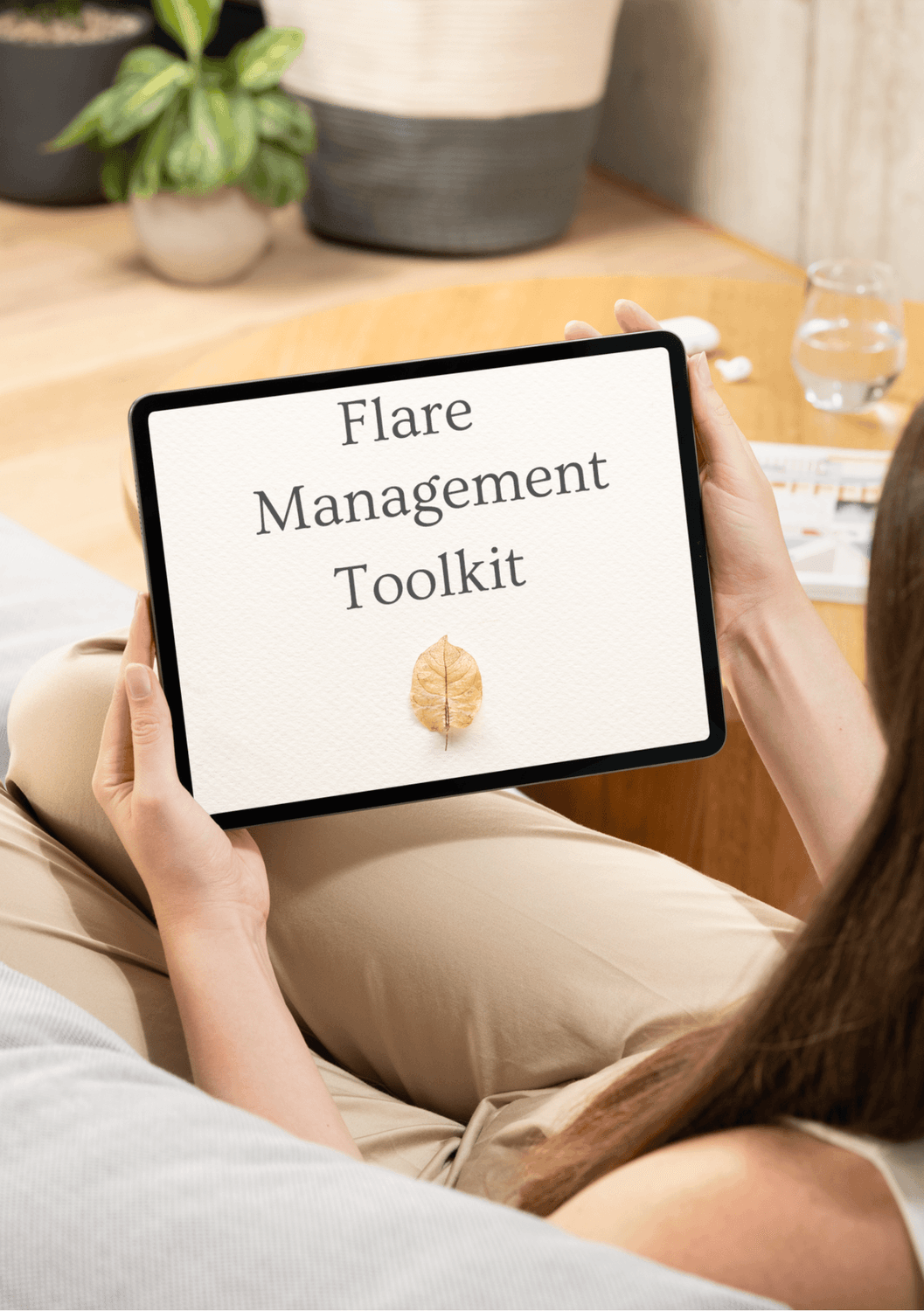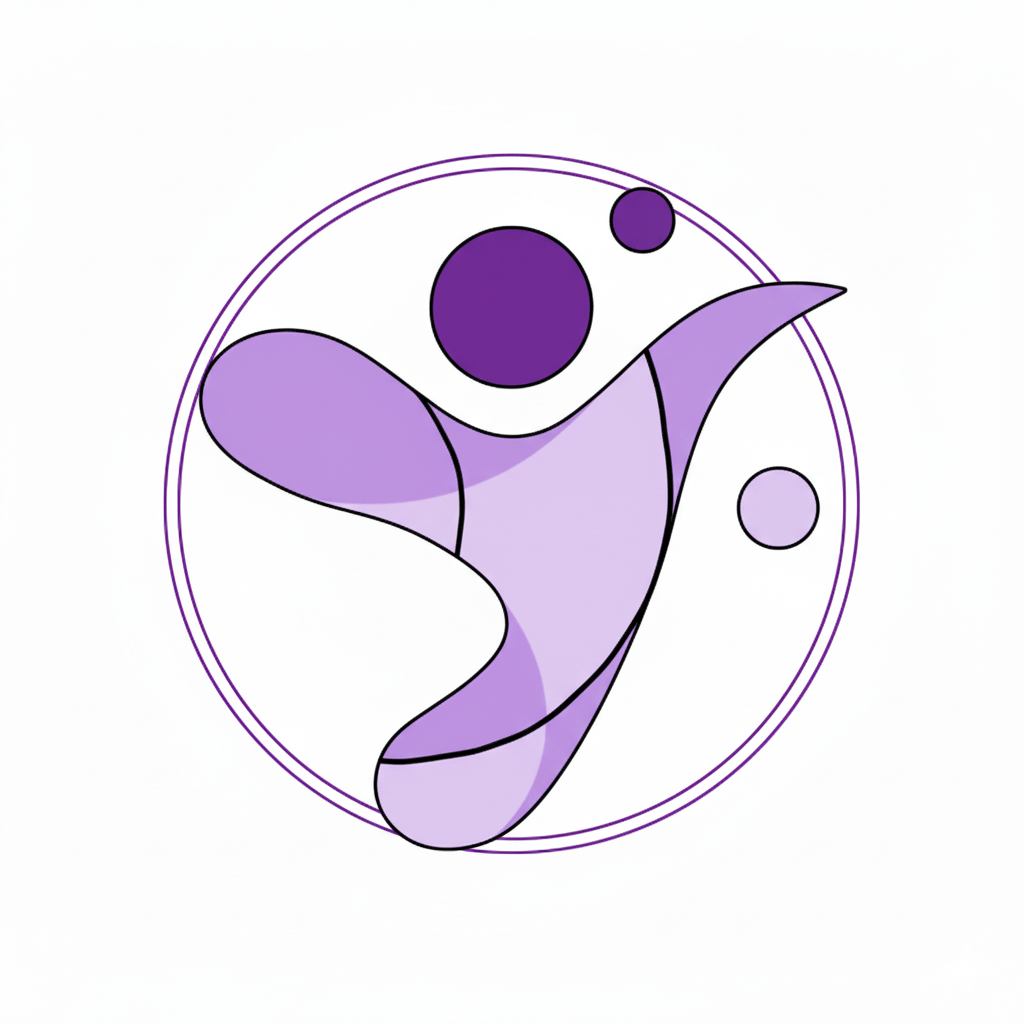The Ultimate Fibromyalgia Flare Management Toolkit
From Strain to Strength: Unlocking Your Ultimate Fibromyalgia Flare Up Management Toolkit
If you live with fibromyalgia, you know that a "good day" can turn into a "bad week" with little warning. The pain is constant, the fatigue is crushing, and the flares feel like a force of nature—unpredictable and devastating.
This is the very heart of why a new approach, like the one outlined in "The Ultimate Fibromyalgia Flare Management Toolkit: From Strain to Strength," is so vital. This toolkit is a roadmap for more than just surviving; it's about learning how to manage your condition by building a life that supports your body, rather than constantly challenging it.
It is an action-oriented, non-linear guide. This means you don't have to start at the beginning and finish everything before you see results. You can jump to the parts you need right now, whether it’s taming a current flare or redesigning your work life. The ultimate goal is to shift your daily experience From Strain to Strength.
In this deep dive, we break down the core philosophy and the most powerful strategies of this proactive approach to lasting well-being.

Part 1: The Fibromyalgia Blueprint – Understanding the Pain Amplifier:
To manage a flare, you must first understand the fundamental science of your pain. The Fibromyalgia Blueprint focuses on what researchers call Central Sensitization.
Think of your nervous system—your brain and spinal cord—as your body’s alarm system. In fibromyalgia, this alarm system becomes overly sensitive and gets stuck in a state of high alert. It begins to misinterpret normal, safe signals as threats. A gentle touch, a loud noise, or even emotional stress—things that wouldn't normally cause pain—are amplified. The volume knob for pain is essentially stuck on the highest setting.
This is why you experience widespread pain that doesn't correlate with a specific injury or inflammation. It’s also why you might feel extreme sensitivity to light, sound, or temperature (known as allodynia or hyperalgesia).
The goal of the Toolkit’s strategies, therefore, isn't just to cover up pain, but to desensitize this overactive alarm system. By reducing the overall load on your system—through better rest, less stress, and intentional movement—you can help your nervous system gradually return to a calmer state.
Part 2: Lifestyle Architecture – Building a Flare-Proof Environment:
The battle against flares isn't won by fighting them head-on; it's won by building an environment that minimizes their opportunities to strike. This is the essence of Lifestyle Architecture, where your home, workspace, and daily routines are active players in your management strategy.
Supercharged Routines & Habits: This involves creating habits that support, not strain, your body. Instead of rushing through a chaotic morning, a supportive routine might include gentle stretching, proper hydration, and a light, anti-inflammatory meal.
Home Reorganization for Fibromyalgia: Adjusting your physical environment can significantly reduce the cumulative strain of daily living. This could mean setting up comfortable rest stations, organizing frequently used items within easy reach to avoid bending and stretching, or adjusting your workspace for optimal posture. Even an occupational therapist can help you make changes to your work area or the way you do certain tasks to cause less stress on your body.
Habit Integration Frameworks: Making new routines effortless is key. Start small, stack new habits onto existing ones (e.g., after I brush my teeth, I take my medication), and celebrate small wins. Remember, consistency in small steps is far better than the "boom-and-bust" cycle of overdoing it.
Part 3 & 4: The Pillars of Flare-Free Productivity and Tailored Task Strategies (Pacing):
The single most important concept for managing life with fibromyalgia is Pacing. This strategy helps you manage your energy, avoid flare-ups, and ultimately do more of what you love with less pain.
Pacing vs. Pushing:
People with chronic conditions often get stuck in a "Boom-and-Bust" cycle.
The "Boom": On a "good day," you push yourself to do everything you couldn't do before, feeling great in the moment.
The "Bust": The next day, or a few hours later, your body retaliates with a severe flare (the "payback"), forcing you into a period of prolonged inactivity.
This cycle not only causes physical pain but also sensitizes your nervous system further. Pacing is the middle road, where you work to keep your activity levels even and avoid those dramatic peaks and crashes.
Key Pacing Techniques:
Establish Your Baseline: The first step is to figure out exactly how long you can do a task—like standing, walking, or reading—before your symptoms worsen. Take an average of three attempts over three days, and then reduce that time by 20%. This reduced number is your baseline. This buffer ensures you stop before you hit the point of a flare.
Break Tasks into Manageable Chunks: Instead of cleaning the entire kitchen, commit to cleaning the sink for 20 minutes, then take a scheduled rest break. Use a timer to ensure you stop when the time is up, not when the pain forces you to.
The 10% Rule for Gradual Increase: To build stamina over time, slowly increase your baseline by no more than 10% each week. If you can walk for 10 minutes today, next week aim for 11 minutes. This slow, steady progress builds activity tolerance without triggering a flare.
Use Spoon Theory: This popular analogy, created by Christine Miserandino, helps explain limited energy. Imagine you start the day with a fixed number of "spoons" (units of energy). Every task, whether physical or mental, costs a certain number of spoons. Pacing is about wisely budgeting your spoons, ensuring you never hit zero, so you can save energy for the activities you truly value.

Part 5: The Fibromyalgia Independent Chore System:
Chores and daily tasks are massive energy-drains that often lead to a "Boom-and-Bust" cycle. The Fibromyalgia Independent Chore System applies the principles of pacing to home management.
Alternating Activities: Don't do two physically demanding tasks back-to-back. If you do the laundry (a standing/lifting task), follow it with a mentally stimulating, sitting task, like paying bills or reading.
Spread Tasks Out: Instead of a single "cleaning day," distribute your chores over the entire week. For example, the bathroom cleaning can be split into three days: clean the bath on Monday, the sink on Tuesday, and the toilet on Wednesday.
Delegate and Prioritize: Be ruthless about what truly needs to be done. Learn to delegate or ask for help. If a task isn't essential or joyful, consider eliminating it or simplifying the steps to conserve your limited energy.
Part 6: HyperFocus Strategies – Overcoming "Fibro Fog":
The cognitive challenges of fibromyalgia, often called "fibro fog," are frustrating. This symptom makes it harder to pay attention, focus on mental tasks, and affects memory. This is linked to the same neurotransmitter dysregulation that controls pain and sleep.
Structure Your Mental Work: Use the Toolkit's framework for organizing thoughts and tasks. Break mental tasks (like paying taxes or writing an email) into short, focused sprints with mandatory rest breaks, just like physical tasks.
Reduce Cognitive Load: The "HyperFocus" approach teaches you to simplify decisions and minimize distractions. Use lists, templates, and pre-set routines (like a 'Daily Workflow Guide') to save mental energy for when you truly need it.
Prioritize Sleep: Poor sleep quality and fatigue are inextricably linked to pain and cognitive function. Addressing your sleep hygiene is one of the most effective strategies for lifting the fog.
Part 7 & 8: Emotional Regulation and Impulsivity Prevention
Stress is one of the most common and powerful triggers for a fibromyalgia flare. Emotional and physical stress causes a surge of hormones like cortisol and adrenaline, which heightens the nervous system’s reactivity and turns the pain dial up.
Emotional Regulation is a key module in the Toolkit because it provides practical ways to minimize the intensity of your internal stress response.
Identify Emotional Triggers: Just as you track physical exertion, you must track emotional stressors. This includes situations, people, or events that cause distress.
The Stress-Relief Toolkit: Commit to using stress management techniques daily. Simple, accessible methods like deep-breathing exercises, mindfulness meditation, or listening to music can significantly lower your heart rate and relax muscles.
Coping Mechanisms: Talking therapies, such as Cognitive Behavioral Therapy (CBT) or Acceptance and Commitment Therapy (ACT), have been shown to help reduce pain and disability in fibromyalgia. These therapies can teach you to challenge unhelpful ways of thinking, cope with emotional stress, and accept what is out of your control while committing to making positive changes.
Impulsivity & Outburst Prevention: Flares and chronic pain often lead to irritability. Learning to recognize the early warning signs of overexertion or emotional overwhelm—the moment before you snap or crash—allows you to apply a regulation technique before the situation escalates, preserving both your emotional and physical energy.

Part 9: Positive Lifestyle for People with Fibromyalgia (The Thriving Checklist):
To ensure consistency and daily accountability, the Toolkit provides a Daily Thriving Checklist—a quick, visual tool designed to give you a snapshot of your progress. This checklist focuses on simple, actionable habits that research confirms are the foundation of effective fibromyalgia management.
Your Daily FUEL (Fibromyalgia Ultimate Energy Lifeline):
Hydration: Drink at least 8 glasses of water.
Nutrition: Eat a healthy, anti-inflammatory meal. A nutritious, balanced diet is a core healthy habit.
Rest: Took a 15-minute rest break. Taking preventative rests is a vital part of your routine.
Gentle Movement: Engaged in gentle movement (e.g., walk, stretch). Regular, low-impact exercise like walking, swimming, or yoga, started slowly and built up over time, is proven to relieve symptoms.
Stress Management: Used a stress-relief technique (e.g., meditation, deep breathing).
Awareness: Listened to my body's warning signs and identified one potential trigger today.
Connection: Connected with a loved one. Social support helps you manage stress and frustration.
By checking off these boxes, you are actively participating in your own management, creating a daily record of success, and building momentum.
Part 10: Additional Strategies for Unique Struggles:
Beyond the core modules, the Toolkit recognizes that fibromyalgia is an individualized condition. This section often covers strategies tailored to unique struggles.
For example, people may find relief in complementary health approaches:
Acupuncture: Some studies suggest that this ancient Chinese technique, which uses fine needles to cause changes in blood flow and brain chemicals, helps relieve fibromyalgia symptoms.
Massage Therapy: This technique can reduce heart rate, relax muscles, improve range of motion, and boost the body's natural pain-relieving chemicals. It is excellent for stress and muscle relaxation.
Mind-Body Practices: Practices like Yoga and Tai Chi combine meditation, slow movements, deep breathing, and relaxation, and have been found to be helpful in controlling symptoms.
Consulting with a healthcare provider is essential before trying a new treatment, but being informed about these options empowers you to have a proactive role in your own care.

Your Journey From Strain to Strength
The ultimate lesson of the "Fibromyalgia Flare Management Toolkit" is that you have more control than you might realize. Fibromyalgia is a complex condition involving a highly sensitive nervous system. Managing it requires a holistic strategy—not just pills, but a complete overhaul of your daily Lifestyle Architecture.
By diligently applying the principles of Pacing, consistently using the Daily Thriving Checklist, and mastering Emotional Regulation, you shift your focus from reacting to pain to proactively building a sustainable life.
The journey from strain to strength is a marathon, not a sprint. Be persistent, be patient, and remember that pacing is not about doing less—it's about doing things smartly, sustainably, and with self-compassion. You are taking back control, one mindful step at a time.

Trending










